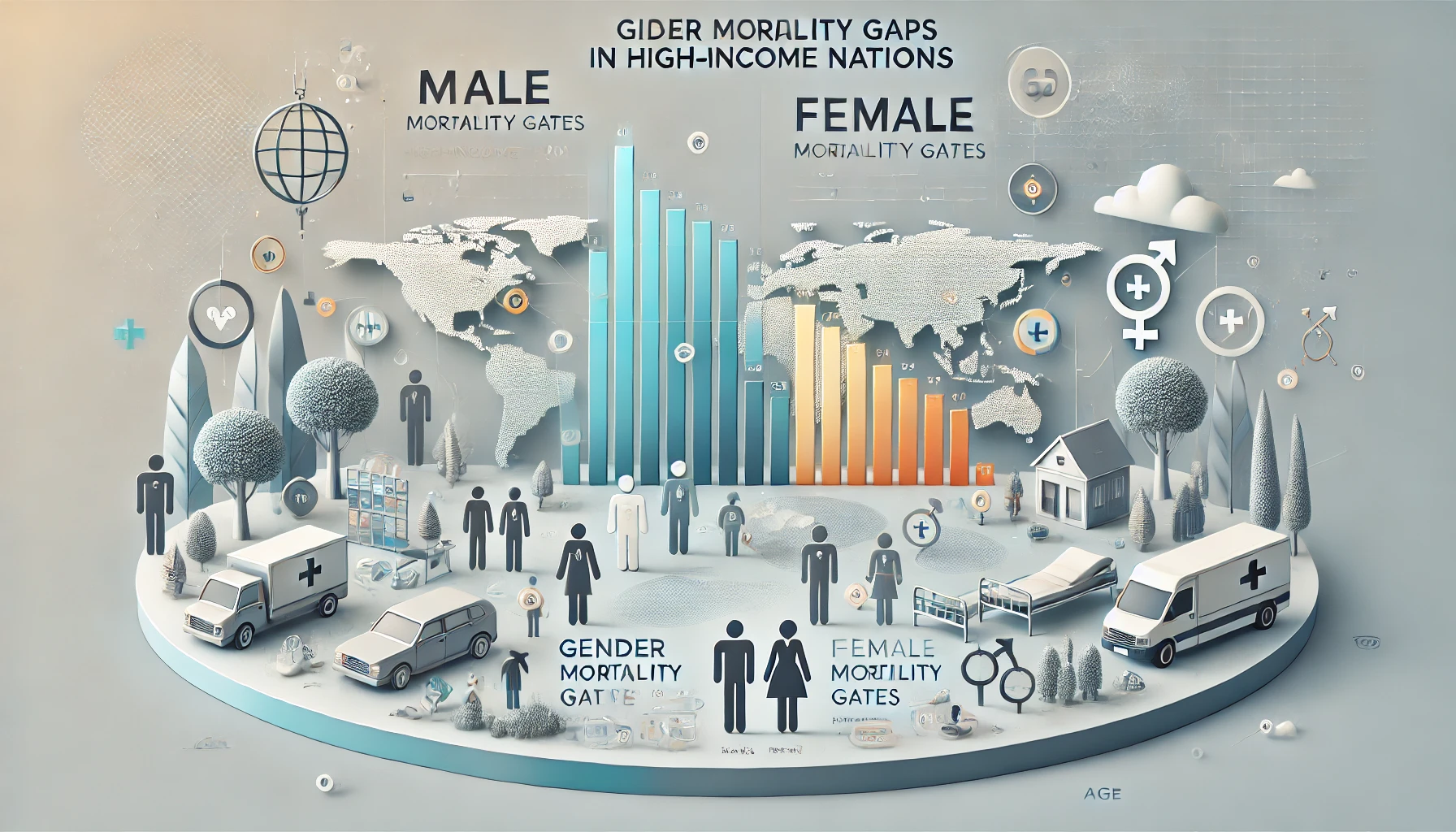The Pandemic’s Unequal Burden: Why Men in High-Income Nations Suffered More
A World Bank study revealed that COVID-19 significantly widened gender mortality gaps, particularly in high-income countries where men experienced disproportionately higher excess mortality. These disparities, influenced by age, socioeconomic factors, and vaccination access, highlight the need for targeted public health interventions.

Researchers from the World Bank, including Kathleen Beegle, Gabriel Demombynes, Damien de Walque, and Paul Gubbins, alongside Jeremy Veillard, conducted a study that reveals how the COVID-19 pandemic exacerbated existing gender mortality gaps, particularly in high-income countries. Using World Health Organization (WHO) excess mortality data from 75 countries in 2020 and 62 in 2021, the study examined mortality trends across sex, age, and income levels. Historically, men have consistently shown higher mortality rates than women due to a complex interplay of environmental, genetic, and cultural factors. However, the pandemic intensified this disparity, with men in high-income countries disproportionately impacted. The research focused on excess mortality, a measure that includes both direct COVID-19 deaths and broader pandemic-related effects, such as healthcare disruptions. The analysis was restricted to nations with reliable, recorded all-cause mortality data, excluding many low-income countries with underdeveloped reporting systems.
Unequal Burden of Mortality by Sex and Age
The study found that men experienced significantly higher excess mortality rates than women, especially in high-income nations where the disparity was more pronounced in 2020. For example, the male-to-female mortality ratio for excess deaths in these countries was 2.21, far exceeding the ratio for expected all-cause mortality of 1.69. In contrast, middle-income countries displayed less dramatic gender disparities, with excess mortality ratios closer to pre-pandemic norms. This difference may be attributed to factors such as vaccine rollout speed, healthcare access, and societal structures that influence infection and fatality rates. By 2021, the gender mortality gap had narrowed slightly in high-income nations, coinciding with the widespread availability of vaccines. However, disparities remained, particularly among men aged 45 and older, who consistently showed higher excess mortality rates than women across all age groups.
Variations in Mortality Across Countries
The research highlighted the role of age in amplifying gender differences. In high-income countries, the age slope of mortality, which reflects the change in death rates with each additional decade of life, was steeper for men during the pandemic, indicating greater vulnerability. While the pattern moderated in 2021, the age slope remained higher for men than women in many middle-income nations. These findings underscore how the intersection of age, gender, and socioeconomic factors shaped mortality outcomes during the pandemic. The study also revealed significant variability in excess mortality patterns among countries within the same income group. For instance, in some nations like Germany, the male-to-female mortality ratio for certain age groups exceeded 30, while in others, like the Dominican Republic, excess mortality ratios fluctuated dramatically across age cohorts. These variations often reflected differences in population size, healthcare infrastructure, and public health responses.
Challenges in Understanding Low-Income Countries
One of the study's notable limitations was its exclusion of low-income countries due to a lack of reliable mortality data. These nations, which often face higher infection fatality rates and different disease burdens, could exhibit distinct mortality patterns that remain undocumented. Previous research suggests that the gender gap in life expectancy tends to widen with increasing national income levels, driven by structural inequalities and health system capacities. In low-income settings, men may still face higher COVID-19 fatality rates, but the dynamics could differ due to variations in healthcare access, occupational risks, and other socioeconomic factors.
Targeted Public Health Strategies Are Essential
The researchers emphasized the importance of targeted public health interventions to address these disparities. Older men with pre-existing conditions, who are at heightened risk, may benefit from policies prioritizing their protection, such as vaccine distribution strategies and workplace safety measures. The study also calls for more granular investigations into the underlying drivers of gendered mortality differences. Factors such as job structures, long-term care residency patterns, and pre-existing health conditions likely played significant roles in shaping pandemic outcomes. For example, men are often overrepresented in occupations with higher infection risks, while women, particularly in high-income countries, are more likely to reside in nursing homes, which became hotspots for outbreaks during the pandemic. Differences in co-morbidities, such as obesity rates and chronic disease prevalence, further complicated these dynamics, with variations across income levels influencing mortality outcomes.
Despite its limitations, the study underscores the critical need for robust demographic and mortality data to inform public health responses. The researchers advocate for international efforts to standardize and improve data collection systems, particularly in low-income countries where gaps persist. As the world continues to recover from the pandemic, understanding the multifaceted factors driving gender disparities in mortality will be essential for preparing for future public health emergencies. The findings highlight not only the immediate impact of COVID-19 but also the broader implications for addressing health inequities in an increasingly interconnected world. By shedding light on these patterns, the study provides valuable insights for policymakers and public health practitioners aiming to mitigate the effects of future crises on vulnerable populations.
- FIRST PUBLISHED IN:
- Devdiscourse
ALSO READ
World Bank Approves ELEMENT Project to Boost Forest Management and Livelihoods in Tripura and Nagaland
World Bank Approves $250M Program to Enhance Morocco’s Municipal Solid Waste Management System
Fiji: World Bank Report Calls for Investment in Health System to Combat NCDs Crisis
World Bank Approves $204M NEAT Project to Transform Papua New Guinea’s Energy Sector
Pakistan Partners with World Bank to Tackle Smog Crisis










